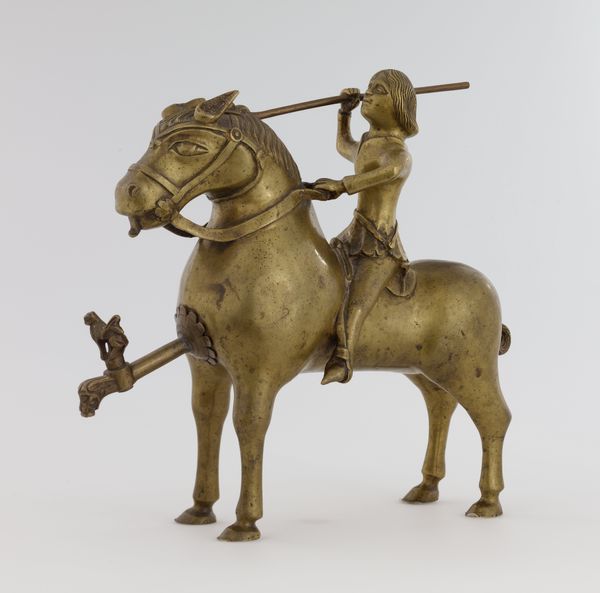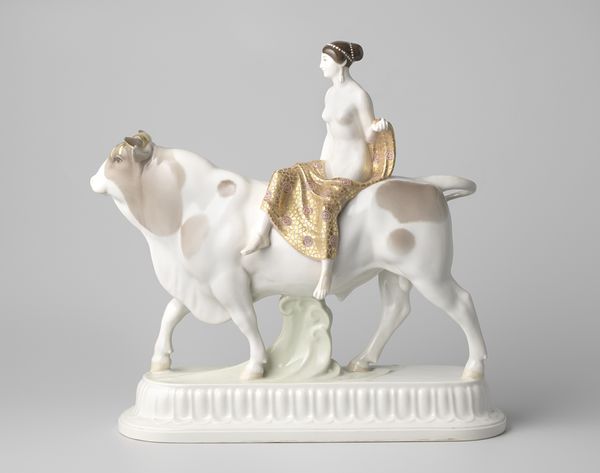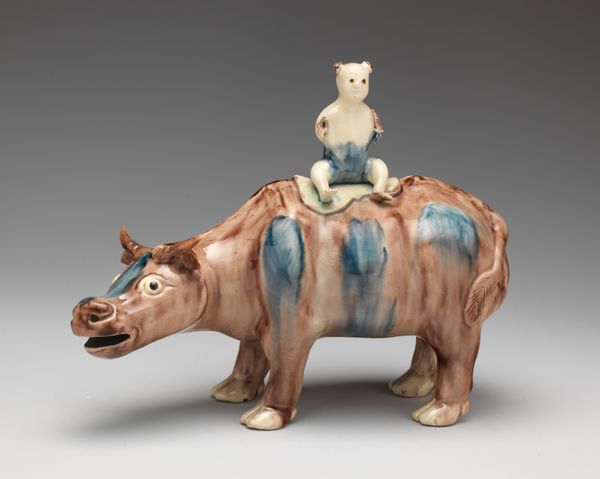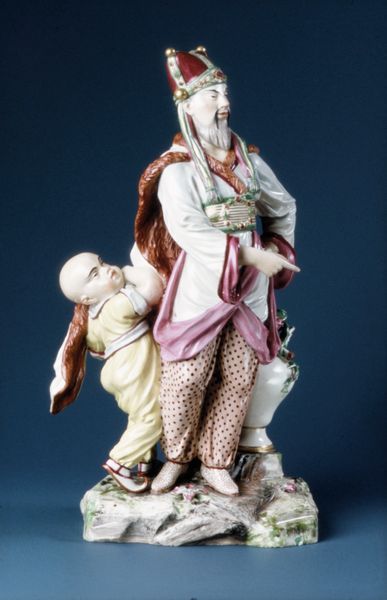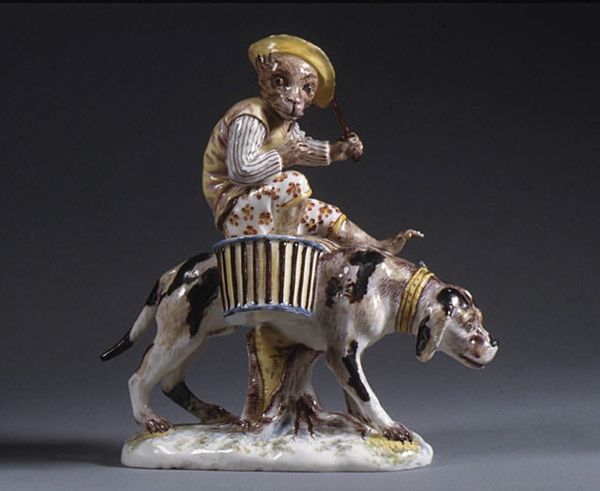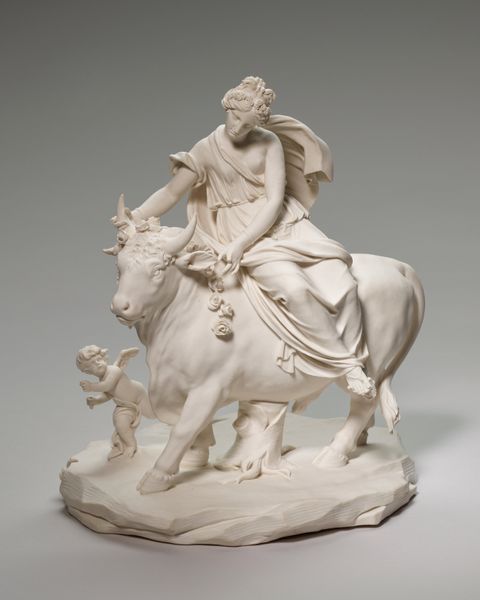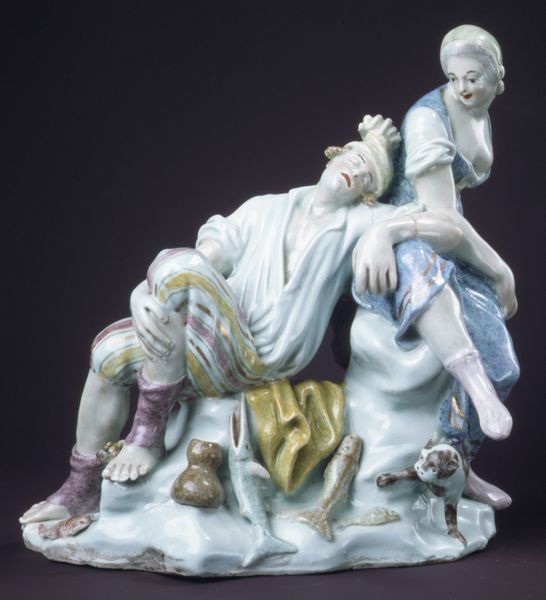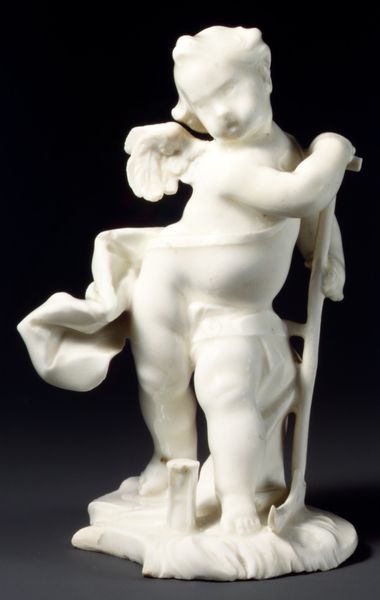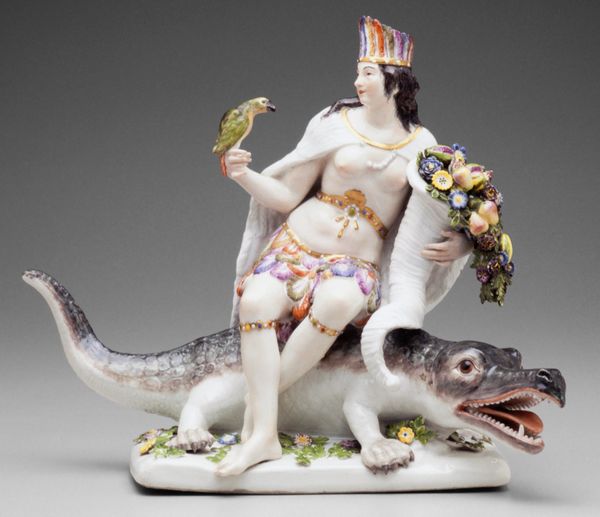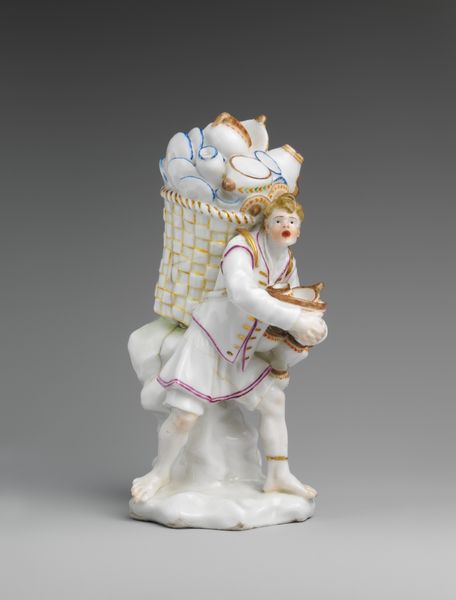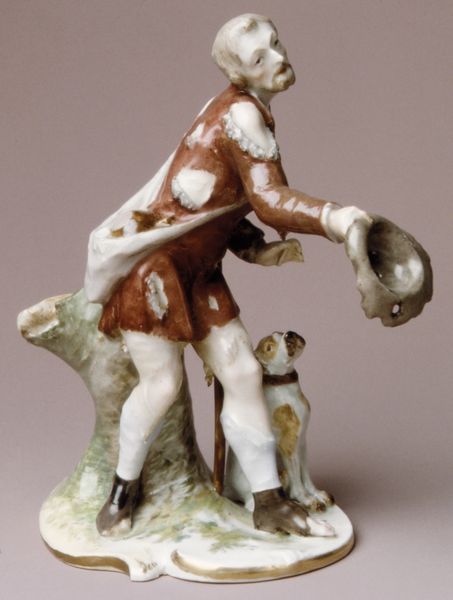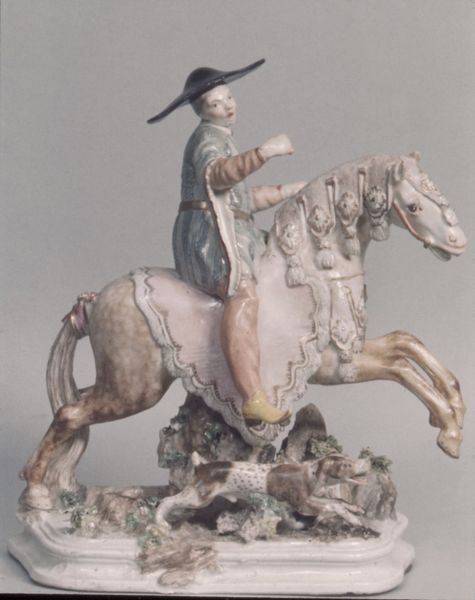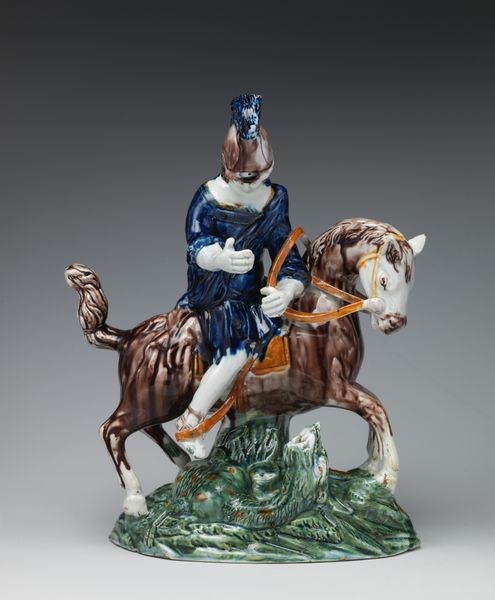
ceramic, porcelain, sculpture
#
animal
#
sculpture
#
ceramic
#
porcelain
#
figuration
#
sculpture
#
decorative-art
#
rococo
Dimensions: Overall (figure .328a): 8 1/16 × 8 in. (20.5 × 20.3 cm); Overall (base .328b): 1 3/4 × 9 5/8 in. (4.4 × 24.4 cm)
Copyright: Public Domain
This is a porcelain sculpture called "Turk on a Rhinoceros" made in the late 18th or early 19th century by the Ludwigsburg Porcelain Manufactory. It encapsulates the complex cultural exchanges and power dynamics of its time. The figure presents an exoticized vision of the "Orient," a region romanticized and often misunderstood by Europeans. Here, the Turk is not depicted in a position of power or authority, but rather as a decorative element, literally riding a rhinoceros. This reflects the period’s fascination with, and simultaneous subjugation of, non-European cultures. The choice of a rhinoceros as the Turk's mount is also significant. Rhinos were rare and exotic animals to Europeans, symbolizing the reach of colonial power. The sculpture then becomes not just a representation of a Turk, but also a display of European dominance over the natural and human world. How does it feel to witness such a confluence of power, identity, and representation frozen in porcelain? This sculpture serves as a reminder of the stories we tell ourselves about each other and the world.
Comments
No comments
Be the first to comment and join the conversation on the ultimate creative platform.
